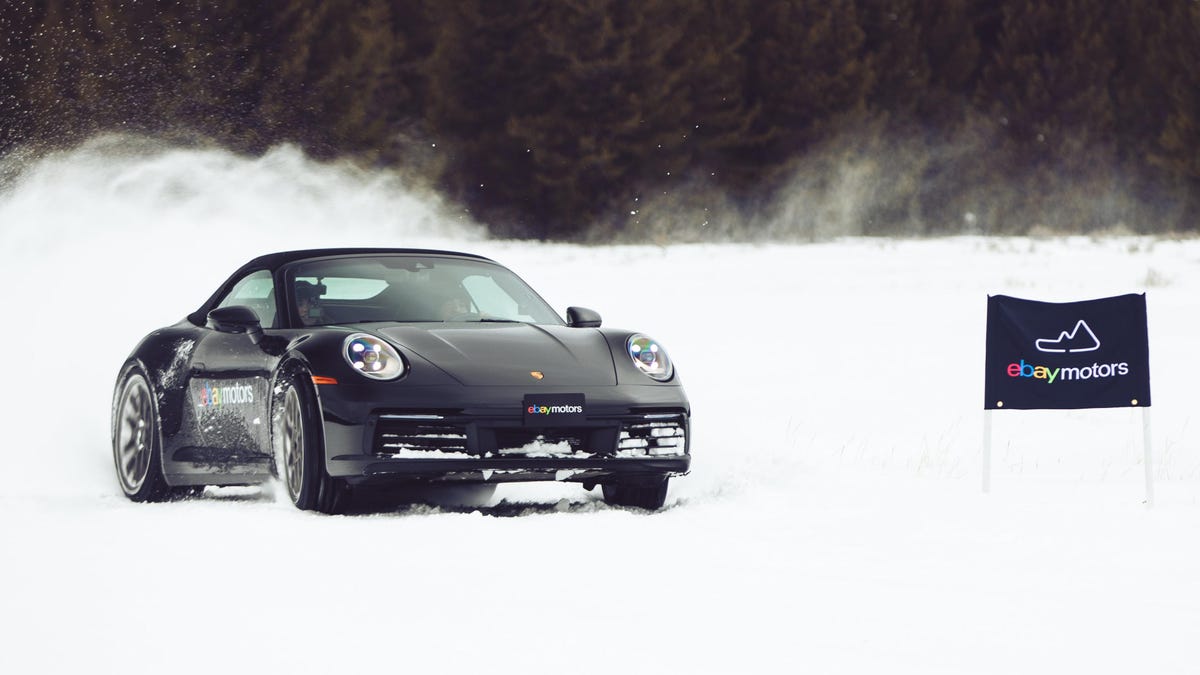Winter tires perform better in cold weather than all-seasons. That’s just a fact. Are all-season tires better than they have been in the past when it comes to handling cooler temperatures? Absolutely. Do you necessarily need a dedicated set of winter tires if you live in an area that doesn’t get much colder than 40 degrees Fahrenheit in the winter? Probably not. Still, it’s just a fact that tires that have been specifically engineered to perform better in the cold and on snow are going to do exactly that.
Even if you know and accept that fact, one thing that can be hard to wrap your mind around is just how big a difference there is between a winter tire and a decent stock one. After all, it’s not often that someone gets the opportunity to drive the same car on snow back to back in a set of tests designed to highlight the differences in handling and performance between two sets of tires. So when eBay Motors asked me to come do exactly that, I jumped at the opportunity.
[Full Disclosure: eBay Motors was so desperate to make sure people know it sells tires (including winter tires), it flew me to Bozeman, Montana in first class for some reason, put me up in a ridiculously fancy hotel and bought all my food and alcohol.]
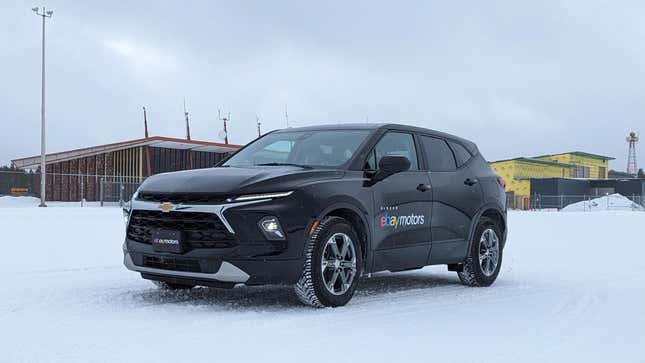
Yes, this driving event was run by eBay Motors, not a tire manufacturer, to publicize the fact that it sells tires. So it drove a bunch of journalists out to a closed Yellowstone Airport for a day of winter tire testing on the snow-covered tarmac. And now you know. eBay Motors sells tires, including winter tires. Anyway, where were we? Oh yeah, the tire testing.
First up was a moose test with two Chevrolet Blazers, one wearing Continental CrossContact LX Sports and the other wearing Continental VikingContact 7s. Because I was driving a front-wheel-drive crossover, the differences in how each Blazer handled weren’t nearly as dramatic as they would be in later tests. Still, to no one’s surprise, the CrossContacts were slower with sloppier handling than the VikingContacts.
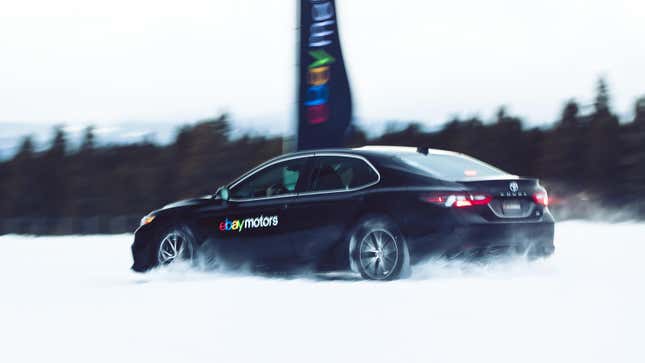
Next up was an ice course with two Toyota Camrys. The first used a set of Yokohama ADVAN Apex V601s, while the second was equipped with iceGuard IG53s. Essentially, there was a short slalom section followed by a straight and then a brake zone, and unlike the moose test, the differences in performance were much easier to measure here. Apparently, some people believe that deflating your rear tires improves handling in snow, so they also aired down the tires on the Camry wearing stock tires.
If you know someone who thinks they can simply air down their stock tires and be fine in inclement weather, you officially have my permission to tell them they’re an idiot. Even ignoring the handling differences in the slalom section, the biggest takeaway was that braking from 25 mph required eight or nine extra car lengths in the Camry with the Apexes. Or, put another way, it took about the same distance to come to a stop on the iceGuards from 45 mph as it did on the Apexes from 25 mph.
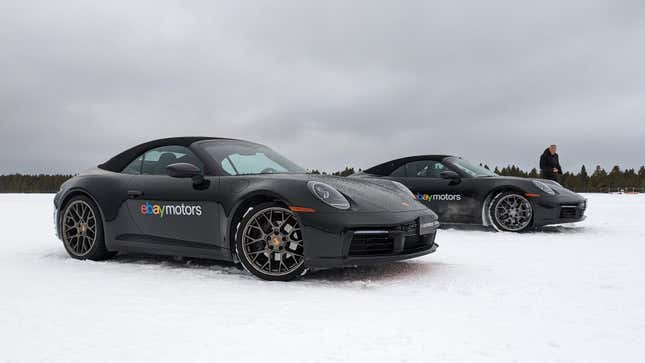
After the ice course, we headed out to one of the most enjoyable events of the day, a slalom course featuring a pair of Porsche 911 Carrera Cabriolets. Why eBay Motors brought a pair of convertibles to Montana for winter testing, I have no idea, but I’m never going to complain about being handed the keys to any 911 ever. Unless we’re on snow, and the 911 in question is wearing Pirelli P Zero PZ4s. I did manage to get moving, but I also got stuck after maybe 10 feet. On those tires, it was literally useless.
As you can imagine, switching to the 911 that was wearing Winter Sottozero Series IIs was like driving a completely different car. One couldn’t move more than a few feet on compacted snow, and the other handled the slalom course without an issue. Was that the most unexpected outcome? Not at all, but I’m not going to pretend that confirming the obvious wasn’t an absolute blast.
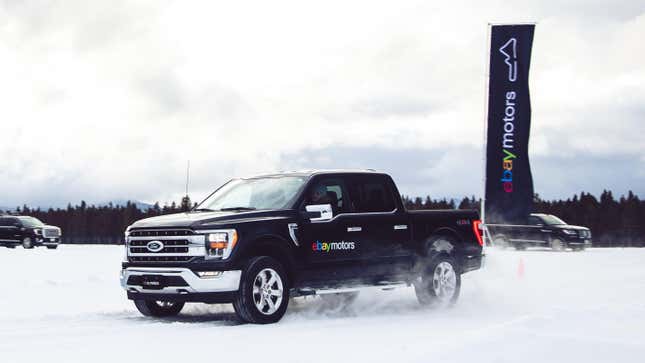
The final event of the day was a snowcross course in a Ford F-150. In addition to one of the F-150s wearing Bridgestone Dueler A/T RH-S tires and the other being on Blizzak DM-V2s, they also added 600 lbs to the bed of the truck on regular tires. After all, you don’t need fancy tires if you just throw a bunch of weight over the rear tires, right?
In a sense, I guess that’s correct. No one was timing laps, so I focused more on power slides than finishing the fastest, and I never had to worry about losing control. And boy, did it love to slide on those tires. Hopping into the F-150 on winter tires, though, immediately put the previous truck’s performance into perspective. I was still able to hang the tail out as much as I wanted, but I was doing so at speeds that were at least double what I’d been able to do on the first lap. Plus, as you can imagine, it was very noticeable the entire time that the bed didn’t have an extra 600 pounds in it.
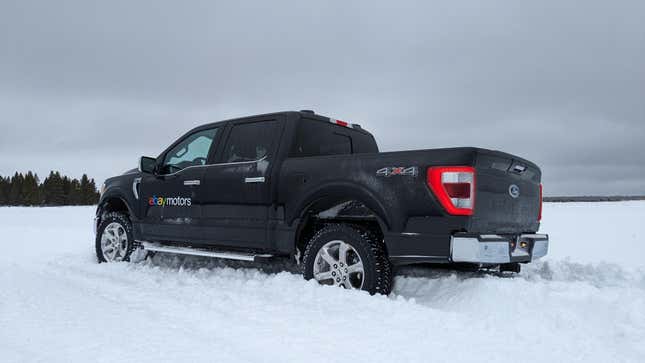
Unfortunately for one of the drivers in my group, winter tires aren’t entirely foolproof. If you send it too hard, you can still easily end up stuck in deeper snow. And if you send it hard enough, you can get so stuck that they have to send another truck to tow you out because there’s no pushing it out. And then, when that truck can’t do it, they have to use a second truck to complete the rescue. So while it was clear that the winter tires offered a huge performance improvement over the regular tires, they’re definitely not magic.
Now, to be fair, these tests were all done on snow and ice where the differences in performance are going to be much more drastic between tires. And even if you live in a city that gets a good bit of snow, odds are, between the salt crews and the plows, you’re probably not going to be dealing with snow on the roads except in the occasional extreme situation. Of course, there are also plenty of places in the U.S. that don’t ever get cold enough to justify anything other than a pair of all-seasons.
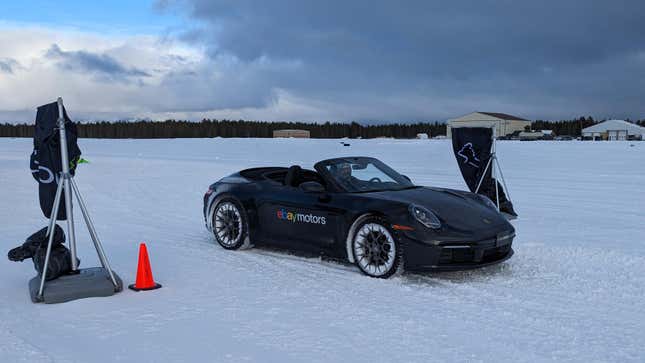
That said, if you do live in an area that gets cold enough to justify buying a set of winter tires, it’s clear that from both a performance and safety perspective, you’re going to be better off doing exactly that. They’re going to accelerate, brake and turn better than even a pair of all-seasons no matter what you’re doing or what kind of road you’re on.
The most important takeaway, though, is probably not that winter tires do better in winter weather. Instead, I’d say it’s that even tricks such as adding weight to the back of a truck still won’t improve winter performance enough to match what you can get out of a set of dedicated winter ties. Also, if you ever get a chance to drive a Porsche 911 on winter tires in the snow, absolutely take that opportunity. I guarantee you won’t regret it.

